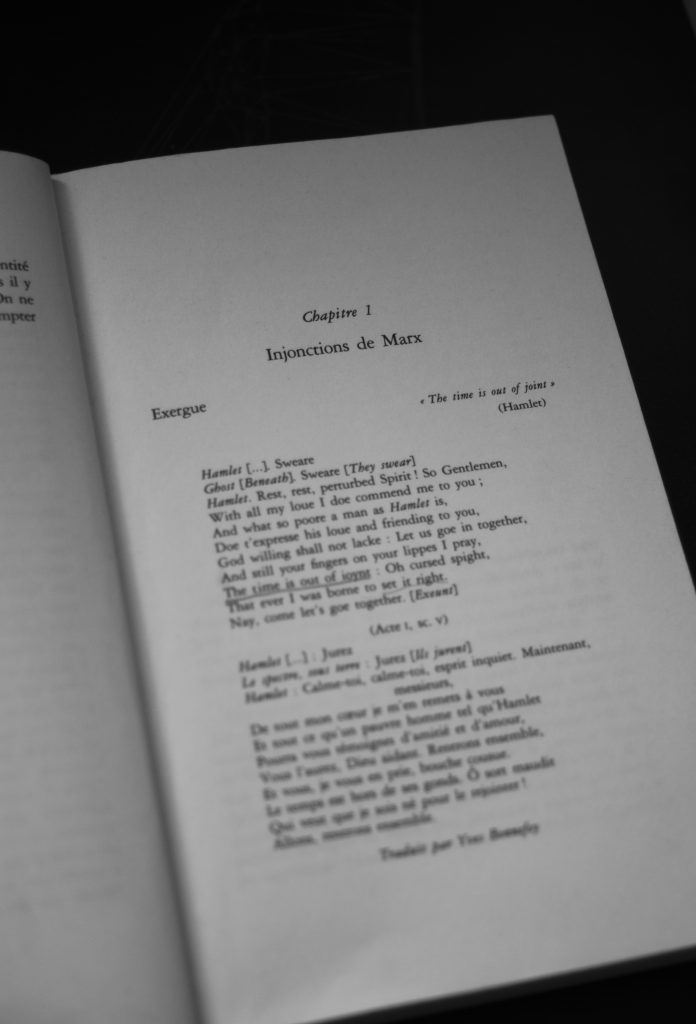In October, I did some night photography experiments with a Nikon D3 and a Pentax K1.
On a Pentax forum, I saw a couple of photos taken with an old Pentax K10D, which is the last DSLR camera from Pentax built around a CCD (Charge-Coupled Device) sensor.
The 10D was released in 2006 following a range of CCD-based 6.1 megapixels DSLRs starting with the Pentax *ist D released in 2003, followed, somewhat confusingly, by the Pentax *istD S, Pentax *istD DL and Pentax *istD DL2.
After seeing the quality and what some term ‘tonality’ of K10D photos, I decided to get a K10D off of eBay at a very reasonable price of €50, mint condition, original packaging, shutter count a bit over 6,000, weighing in at roughly 800 grams (the Pentax K1 weighs about 200 grams more).
The menu system was a bit confusing at first, but I soon realized that the firmware (version 1.0) needed an upgrade to unlock several standard features, for example mapping ISO settings to either of the two control wheels.
K10D & Frosty Branches in January

First shots with the K10D – Windows of the Palm House

Its design was inspired by Joseph Paxton’s Crystal Palace, and it serves as a prominent example of 19th-century iron and glass architecture.

Going through the photos a second time, it struck me there’s a meta-element in terms of the blurriness of the photos and the famous waterlily series Nymphéas by Monét (1840 – 1927) which consists of around 250 oil paintings, some of which are huge oil paintings, measuring up to 200 x 300 centimeters.
Monét’s work is some of the most reproduced art in the world with its broad popular appeal.


CMOS vs CCD sensors
Unlike newer CMOS sensors, the CCD in the Pentax K10D captures light in a way that some photographers describe as more natural, offering a softness that can be hard to find in modern gear.
It has a way of turning light and shadow into something more painterly, more alive. If handled right, each shot brings out textures and colors with depth, but without the synthetic feel, which more modern cameras are associated with by some photographers preferring vintage equipment.

The naturalness of the photos can be compared to why some people prefer the sound characters of tube amplifiers instead of modern solid state / transistor-based amplification.
Yes, there’s more noise, but the overall impression these technologies leave is one of naturalness.
If you’re drawn to capturing the world with patience and thought, whilst losing some levels of detail and getting fewer megapixels to work with in post-processing, a camera like the K10D could become a good companion.
The 10 megapixels might be a deal-breaker for some, but it’s my impression that much can be done with modern AI-based upscalers.
Pentax K10D versus Nikon D200
Seeing what the 10D could do, I got a Nikon D200. At first, I thought the two cameras used the same sensor. However, the Nikon D200 uses the Sony ICX483AQA, whereas the Pentax K10D uses the Sony ICX493AQA.
The chips are two versions of the same core 10.2MP APS-C CCD sensor. The ICX483AQA is the “performance” variant optimized for speed with its four-channel readout, while the ICX493AQA is the “standard” variant with a two-channel readout, offering the same image quality but at a more modest speed.
The Nikon D200 is rated at five frames per second compared to the K10D’s three frames per second.
The two cameras are similar in their build quality. However, their menu systems and mounting systems differ; the Pentax uses a K-mount, while the Nikon uses an F-mount.
Both implementations are 3872 × 2592 pixels (10.2 megapixels). The greatest differences are that the K10D has image stabilization, whereas the D200 does not.
Pentax K10D versus Pentax Optio H90 & Pentax Optio P70

A bit further down the road from getting the K10D, I got two Pentax compact cameras too.
The Pentax Optio P70, and the Pentax Optio H90. I’ll do a separate introduction to the two CCD-based compact cameras at a later stage.
Sony sensors in the Nikon D80, the Samsung GX-10, and the Sony α10
Uses in other consumer-grade cameras from the same period: Nikon D80 (Sony ICX493AQA), Samsung GX-10 (Sony ICX493AQA), and Sony α10 (Sony ICX493AQA).

Transformers

Spectres de Marx by Derrida

At the top right, the quotation “The time is out of joint” is highlighted, followed by excerpts in both English and French. The English passage reproduces part of Hamlet’s dialogue in Act I, Scene V, including the famous lament on time being “out of joint.”
Below it, the same lines are translated into French by Yves Bonnefoy, a noted poet and translator. Pentax K10D & Carl Zeiss 25mm f/2.
Pentax KD10 Specifications
- When was the 10D released? November 2006
- Cost at release: $899 (around $1400 in 2024 adjusted for inflation)
- Megapixels / resolution: 10.2 MP (CCD sensor)
- Size of the sensor: APS-C (23.5 x 15.7 mm)
- Is the K10D full-frame: No, it’s APS-C only. First Pentax full-frame is the K1 (released in 2016).
- ISO Range: 100 to 1600
- Image Processor: PRIME (Pentax Real IMaging Engine)
- Continuous Shooting Speed: 3 frames per second
- Shutter Speed: 1/4000 sec to 30 sec (plus bulb mode)
- Viewfinder: Optical pentaprism with 95% coverage and 0.95x magnification
- LCD Screen: 2.5-inch TFT with 210,000 dots
- Autofocus System: 11-point SAFOX VIII with 9 cross-type sensors
- Image Stabilization: Sensor-shift Shake Reduction (SR)
- File Formats: JPEG, RAW (PEF and DNG)
- Battery Life: Approx. 500 shots
- Flash: Built-in pop-up flash with GN 11 at ISO 100
- Weight: 710g (body only, without battery)
- Size of RAW files: around 16MB
- Weather Sealing: Dust and water-resistant construction
- Lens mount: PENTAX KAF2
- Category: Prosumer / advanced consumer
- Ease of use: Very easy, though menu can seem counter intuitive from time to time
- Image stabilization / anti-shake: Yes, and very well implemented
- High ISO performance: The K10D does not perform well with high ISO settings (in my opinion)
- Does the CCD sensor make a difference: Yes, I think so.
- Is the K10D a good camera in 2024: It depends on use. But at current prices, it’s definitely worth picking one up to do some experiments.
- Did later models come with CCD sensors: No. The K10D was the latest, the K20D uses a CMOS sensor. The 645D, however, uses a CCD sensor, but it’s in the medium format category
Pentax K10D & Pentax SMC-A 50mm f/1.2 lens

